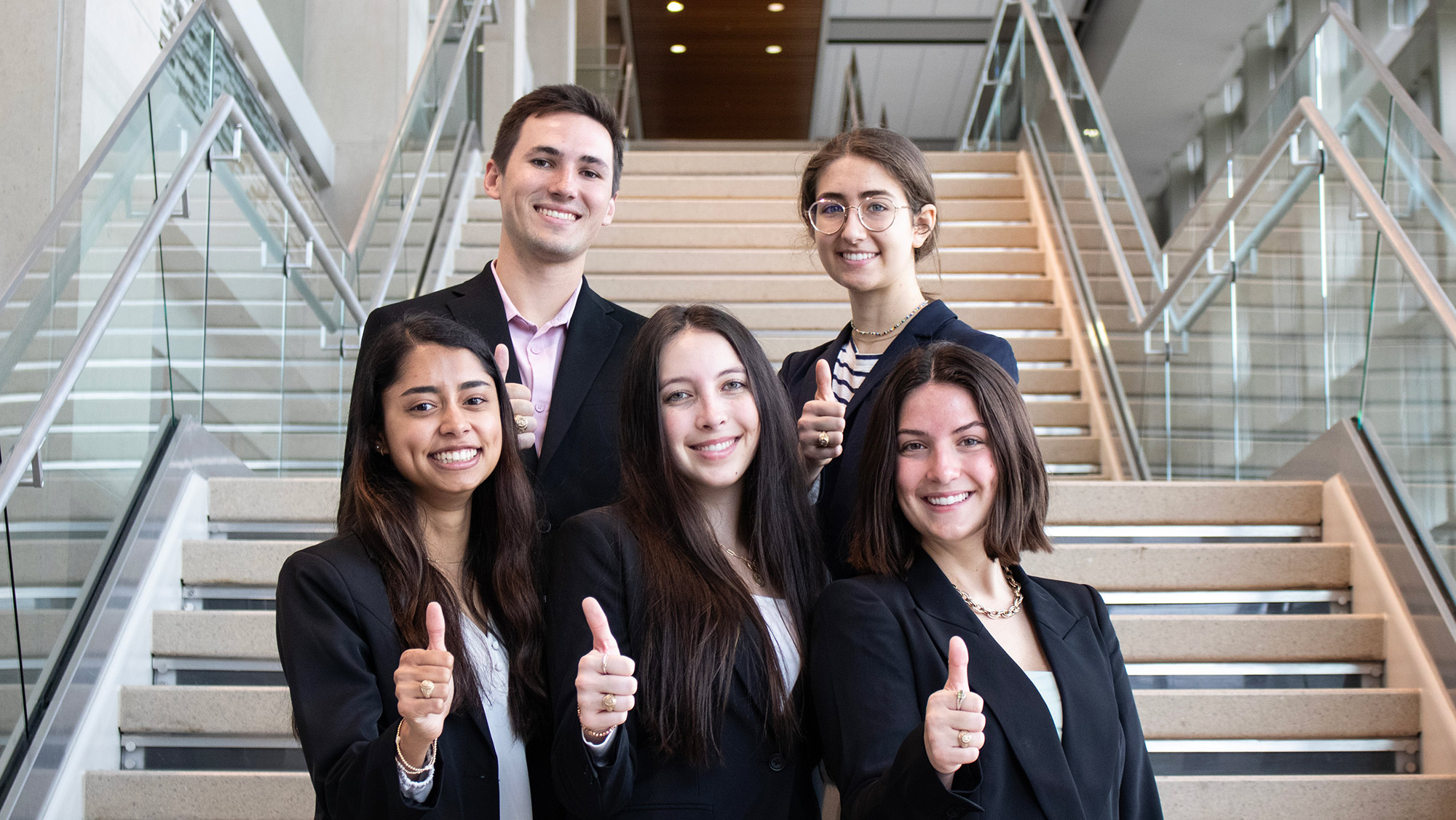
Fetoscopic surgery provides a minimally invasive solution to repair fetal defects in utero on organs so small it’s hard to imagine: hearts the size of almonds, pencil-length spines, and airways no wider than a button.
The surgery requires precision and laser-point focus as the surgeon makes repairs through two tiny four-millimeter incisions in the uterus — a challenge compounded by a limp, easily moved baby. However, a capstone team of seniors from Texas A&M University, known as The Stabilizers, may have a solution.
Sponsored by the Southwest-Midwest Pediatric Device Consortium (SWPDC) with mentors from the Texas Children's Hospital, The Stabilizers from the Department of Biomedical Engineering are creating a medical device that would stabilize the fetus from inside the uterus.
“Some surgeries are conducted around 16 to 24 weeks, so a little bit of movement is a lot for that tiny of a target,” team member Shelby Wright said.
The current stabilization method requires a member of the surgical team to hold the baby in place throughout the duration of the hours-long procedure. According to the team, the method is taxing on the staff and difficult to replicate and teach.
“We're working on developing something that fits inside and is also a good size to effectively stabilize the fetus without using hospital staff for the duration of the surgery,” Wright said. “For that long, it's hard, it's not really reproducible, you can't be properly trained to do that and there are risks that come with that.”
There’s a difference in the way engineers versus doctors think, and we work together to actually come up with a viable solution.
The team said they have already created a few prototypes for their project and modified their design a few times based on suggestions from their sponsor, a pediatric surgeon.
“Surgeons have such a complex and vast understanding of the problems that they're facing and being able to talk to them about the problem of fetal stabilization has been great,” Wright said. “There’s a difference in the way engineers versus doctors think, and we work together to actually come up with a viable solution.”
Problems the team has run into include inserting additional tools into the four-millimeter ports and a lack of resources to properly test every iteration.
“A lot of this on our side has been proof of concept, asking ‘With the tools that we have, can we make it pretty close?’” team member Jackson Roberson said. “We've had a few prototypes of different materials and we were able to get through the ports with some modifications, so we're making progress. We’re putting our final observations and what we've learned from this testing process into our final prototype.”
In addition to developing the device, the team members said they have learned more about the process of medical device development and what the process looks like to engineer a viable solution.
“I've learned that engineering isn't about coming up with an idea and then making it happen immediately,” Wright said. “I'm understanding why it takes so long and why it's expensive to develop medical devices. It's interesting to see why it’s expensive for something to be safe and effective, and to verify that takes a lot of development.”
The project is supported by the SWPDC to increase innovative solutions for pediatric medical conditions — a deficit caused by the rarity of pediatric conditions, resulting in costs that outweigh revenue projections for entrepreneurs and private companies.
"We can help prenatally with the viability of babies and being able to correct disabilities, support people and support women in their pregnancies," Roberson said. "I think that's really powerful."